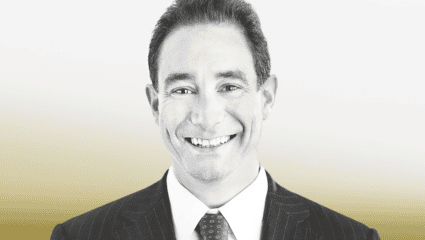The insurance industry has been a powerful force in American culture since its emergence after the Civil War. As demand for their products grew, life insurance companies accumulated massive pools of capital from policy premiums, and by investing that money they shaped the development of railroads and industrial agriculture in the 19th century and shopping centers and office parks after World War II. Their collection of large amounts of information made them precursors of today’s government and private sector institutions that gather and use big data. And with their disparate treatment of whites and African Americans, insurance companies have helped perpetuate economic prejudice.
Nevertheless, the insurance industry for many years received only modest attention from historians. But that’s changed in the past decade. In 2012, Jonathan Levy of the University of Chicago published “Freaks of Fortune: The Emerging World of Capitalism and Risk in America,” where he writes about the rise of life insurance as one aspect of evolving attitudes about risk. Dan Bouk, a professor at Colgate University, treats the first part of the 20th century in his 2015 book, “How Our Days Became Numbered: Risk and the Rise of the Statistical Individual,” an era that saw insurance companies become more involved in Americans’ daily lives and culminated in the creation of Social Security in 1935.
Caley Horan of the Massachusetts Institute of Technology brings the story into the late 20th century in her new book, “Insurance Era: Risk, Governance and The Privatization of Security in Postwar America,” where she discusses how insurers fought off governmental encroachment and reshaped American cities as developers of residential and commercial real estate. Together, the three books depict the economic, political and social importance of insurance companies in the U.S. in unprecedented detail.
Life insurance first flourished in England around 1700, when 40% of the country’s population was urban, Levy writes in “Freaks of Fortune,” a threshold the U.S. would not cross until 1870. The link between life insurance and urbanization would be repeated in the U.S., especially after the Panic of 1837 led to a desire for risk management at a time when a rise in urbanization over the next generation generated greater demand for it among northern workers.
In 1840, there was $4.5 million of life insurance in force in the U.S., up from $168,000 in 1825, Levy writes, and by 1870 there would be $2.3 billion on 800,000 policies. That increased demand made the insurance industry a financial force in the Gilded Age. Insurance companies had $284 million in assets in 1870, $1.2 billion by 1895 and more than double that by 1905. As Richard McCurdy, the president of New York Life Insurance Co. from 1885 to 1906, once admitted, “We had a lot of money coming in that we did not know what to do with,” though his company and its rivals did their best.
Much of the capital flowed west, where it funded the building of railroads and the purchase of farms, creating industrial-scale American agriculture in the process. Corn production in Kansas rose from 30 million bushels in 1866 to 750 million in 1886, for example, and regional specialization developed — corn in Iowa and Illinois, wheat on the Great Plains and dairy in Minnesota and Wisconsin, as well as a rise in cotton production in the south after 1865. Those products fed and clothed residents of the country’s growing cities.
The increased demand pushed farmers to buy larger properties, which meant larger mortgages, which were securitized into bonds where the insurance companies could invest the premiums they received. A collapse in the value of those bonds helped cause the panic of 1893. “The next time a mortgage-backed securities market of such breadth and depth would blow up would be 2007,” Levy writes.
Life insurance also had a significant ideological dimension, Levy argues; it “commodified self-ownership into a financial abstraction.” One of the most important American advocates for the product in the middle decades of the 19th century was Elizur Wright, who was both an abolitionist and a leading professional actuary.
On an 1844 trip to London to solicit the support of antislavery activists and research English actuarial practice, Wright encountered a scene that united the two concerns: an outdoor auction block where people who could no longer afford their life insurance premiums sold their policies to the highest bidder, who would pay the premiums until the insured died — a bet that the death would come sooner rather than later. To Wright, the sales looked like a slave auction, since free men were selling off contracts meant to provide economic security to them and their families.
He worked to give policyholders the right to surrender their policies back to an insurer for their accumulated cash value rather than sell them to a third party, and as the insurance commissioner of Massachusetts he successfully lobbied for legislation requiring insurers to include that right in their policies. The bill passed on April 10, 1861, four days before rebel forces fired on Fort Sumter in South Carolina.
That effort reflected Wright’s belief in a concept of self-ownership that was the basis of both the life insurance industry and “the new radical antislavery.” The argument that free men owned the value of their own labor and should be able to convert some of it into a financial asset to protect their families helped justify the morality of life insurance in a culture where some devout Christians saw it as an affront to God’s control of human life.
Life insurance also allowed northern urban workers to provide themselves and their families with the security that southern slaveholders claimed they gave the people they owned. No less a figure than leading preacher and abolitionist Henry Ward Beecher (the brother of Harriet Beecher Stowe, who wrote “Uncle Tom’s Cabin”) was paid by New York’s Equitable Life Assurance Co. to promote its products. The connection between life insurance and economic self-determinacy would recur after World War II.
Insurance companies “taught Americans to think about life itself in terms of risk,” Levy writes in “Freaks of Fortune,” a shift that affected both average citizens and the industrialists who tried to eliminate the risks of competition by creating trusts. That insight is at the heart of Bouk’s book, “How Our Days Became Numbered,” in which he focuses on how insurance changed Americans’ conceptions of themselves.
Bouk focuses on the tension in life insurance between classing and smoothing. The business is rooted in the actuarial life tables first developed in England in the 17th century and continually refined ever since. Smoothing is the aggregation of individual risks into the very broad categories in those tables; classing is the attempt to define ever more specific categories that allow for more accurate pricing of insurance. In the process of classing individuals, insurers gathered increasing quantities of information about them — an early episode in the history of big data — and tried to influence their behavior. With the creation of Social Security, the federal government would do the same.
Several factors pushed insurance companies to expand after the Civil War. An increasingly urban population meant more prospective customers. Railroads and other growing businesses offered opportunities for insurers to invest premium revenues. And because insurance companies tended to be owned by their policyholders, executives were focused less on profitability and more on growth than they might have been had they been running corporations in which they themselves had large stakes. (Only in the late 20th and early 21st centuries would some large mutual insurers convert to the corporate form.) As they grew, insurers had to balance individual and group risk in pricing their policies.
One new group of potential customers was African Americans, who started applying for policies by the thousands in the 1870s. By 1881, Metropolitan Life Insurance Co., the forerunner of MetLife Inc. (MET), and Prudential Life Insurance Co., now known as Prudential Financial Inc. (PRU), had decided to sell policies to Blacks but would only pay survivors two-thirds of the standard benefit because, the insurers argued, Blacks had higher rates of mortality than whites did.
But in 1884, African American Massachusetts state representative Julius Chapelle argued that the legislature should limit life insurers’ ability to discriminate based on race, since they were basing their pricing on historical data that didn’t reflect the greatly changed circumstances of the black community after the end of slavery. The bill’s supporters beat back an effort by the state’s insurers — among them Boston-based John Hancock Life Insurance Co. — to quash the bill, which Gov. George Dexter Robinson signed into law that April. Within a decade, Connecticut, Michigan, New Jersey, New York and Ohio passed similar laws.
Many insurers, including John Hancock, in essence refused to sell their products to Blacks. Metropolitan was an exception, though it would sell only to applicants “who passed the most strenuous medical scrutiny,” Bouk writes. Black-run fraternal organizations and insurers emerged to fill the void; the author Richard Wright worked for such insurers in Mississippi and Chicago in the 1920s and 1930s.
While major insurers discriminated against African Americans, they did not treat other ethnic groups in the same way even in an era when such discrimination was common. Insurers, Bouk writes, “probably deemed it too dangerous to alienate politically powerful immigrant groups.” Insurers also didn’t factor a policyholder’s geography into premium pricing despite significant variance in mortality in various regions of the U.S. “Life insurers’ classing practices silently ensured that African Americans were held apart and treated differently, as inferiors,” Bouk writes.
Insurers didn’t just make judgments about broad social groups; they also collected lots of information about prospective policy holders. By the 1890s, insurers were buying credit reports on individuals from entities such as the Holmes Mercantile Agency, a forerunner of the present-day national health risk assessment provider Hooper Holmes Inc. To price and process risk, insurers built sprawling bureaucracies that included salesmen and medical professionals as well as the thousands of clerks and accountants who populated headquarters like New York’s Metropolitan Life Building, the tallest building in the world when it was completed in 1909 as well as an excellent place to invest some of the premiums the company was receiving.
In their quest to evaluate risk, insurers helped popularize both the regular medical checkup and the bathroom scale. They required doctors to get scales to examine potential policyholders, Bouk writes, and generated statistical tools that linked certain ideals of weight to health. Insurers thereby helped health reformers and doctors in their push for annual medical exams. By 1922, Metropolitan calculated that the financial return on preventative medical examinations was almost 200%. Not surprisingly, the company started offering health insurance in 1921.
By this point, insurance had a powerful psychological hold on the American psyche as a symbol of middle-class status and financial independence. In their classic 1929 work, “Middletown: A Study in Contemporary American Culture,” the sociologists Robert and Helen Lynd observed that white families cut back on every form of spending they could and took on extra work before giving up their life insurance.
It would retain that hold despite the creation of Social Security in 1935, whose structure was shaped in part by veterans of the insurance industry. Social Security cards were the first of many to find their way into Americans’ wallets. Those credit cards, insurance cards and loyalty cards are the products of a culture of risk analysis that descends from the life insurers of the late 19th and early 20th centuries.
Social Security was part of a broader evolution in attitude toward managing risk in the U.S. and Europe, Wallace Stevens wrote in “Insurance and Social Change,” a 1937 essay for Hartford Accident & Indemnity Co.’s monthly magazine. “As the social mass seeks to maintain itself, it relies more and more on insurance. The truth is that we may well be entering an insurance era,” observed Stevens, an executive at the Connecticut insurer and in his spare time one of the great poets of the 20th century.
Social Security might stimulate demand for other forms of insurance offered by The Hartford and its competitors, Stevens wrote, but it also could end in “nationalization” and the replacement of insurers with government programs unless, as he put it, “private companies can continue to expand with profit and adapt to the changing needs of changing times.” MIT’s Horan describes how insurance companies met that challenge in her book “Insurance Era,” which takes its title from the Stevens essay.
In 1939, two years after the article was published, executives at leading life insurance companies formed the Institute of Life Insurance, which was “one of the first institutional public relations organizations formed in the U.S.,” Horan writes. The ILI and its members foiled attempts to regulate insurance at the national level with the passage of the McCarran-Fergusson Act in 1945, which effectively voided a U.S. Supreme Court decision that came down the previous year.
The law exempted the industry from most federal regulation and ensured that insurance would be overseen by the states, which insulated it from political pressure because of the difficulty industry critics had in getting legislation passed in a critical mass of states. (In January, Congress eliminated the antitrust exemption for health and dental insurers.)
The ILI also made an extended political argument for the superiority of private insurance over government welfare programs that meshed well with American Cold War ideology. Individuals — almost all of them white men in this era — could take responsibility for themselves and their families by purchasing insurance. “The only real security is self-made!” trumpeted one ILI advertisement from 1950, a counterintuitive but apparently successful sales pitch for an industry predicated on pooling individual risk.
Public service programming created by the ILI and individual companies boosted the industry’s reputation and “saved insurance companies millions of dollars on claims,” Horan writes, by educating consumers about ways to reduce their risks in a range of areas from personal health to driving. Such programming also meant more purchases of insurance. “We were building, through indirection, a foundation for the use of insurance,” admitted Holgar Johnson, the ILI’s president from 1939 to 1961, at the end of his career.
Insurers also helped reshape the country’s cities after World War II. In the wake of a 1905 scandal, life insurers were barred from investing in stocks, and so the industry emerged from the Great Depression in strong financial condition. Insurers pushed to be allowed by regulators to invest more broadly and won the right to invest in real estate, among other asset classes.
In the 1940s, insurance companies became developers of large urban housing complexes, the most famous of which is perhaps Stuyvesant Town in New York, which MetLife owned until 2006. (Blackstone Group Inc. (BX) now owns StuyTown.) Despite receiving tax breaks and other government subsidies, the developments were not particularly successful financially, and insurers came under fire for the policies of racial segregation that they often imposed.
In response, insurers shifted to investing in shopping malls in the 1950s. No less a figure than Victor Gruen, who as much as anyone created the modern American mall, said insurance companies were “deeply involved in their construction and planning.” Those malls tended to be in the suburbs, and they helped weaken retail districts in cities. According to Horan, insurance companies held more than 30% of mortgage debt on income-producing properties in the U.S. in between 1950 and 1975
By the 1970s, insurance companies were focusing on office real estate, much of it in suburban office parks where insurers themselves had an increasing percentage of their workforce. Even though insurers publicized their efforts to invest in urban residential areas owned by minorities, the sums involved were modest and didn’t make up for policies that harmed those neighborhoods and their residents.
Horan’s book ends around 1980. Much has changed since then. The massive increase in healthcare spending was just starting; the sector accounted for 9.4% of gross national product in 1980 compared with about 18% last year. Insurance companies once relied on agents to sell their products; now, agents are increasingly being disintermediated by online sales. And insurers’ investment portfolios continue to evolve.
Other aspects of the world she describes persist. Insurers still have large amounts of capital to deploy. Unlike other financial services institutions, they continue to be regulated largely at the state level. Since the early 20th century, insurers have tried to monitor their policyholders’ behavior, and contemporary wearable technology offers unprecedented opportunities for doing so. And, as in the days of Elizur Wright, there remains an acute tension between insurers’ claims that they are merely following the data in deciding whom to insure and how much to charge and the demands of some members of society for a more overarching sense of fairness.




